
YOUR KEY TO LABOR AND EMPLOYMENT LAW IN CHINA
正版全新,绝无盗版,可开具图书发票
¥ 38.9 5.7折 ¥ 68 全新
库存4件
四川成都
认证卖家担保交易快速发货售后保障
作者陆敬波
出版社法律出版社
出版时间2017-11
版次1
装帧其他
上书时间2024-05-09
- 在售商品 暂无
- 平均发货时间 15小时
- 好评率 暂无
- 最新上架
商品详情
- 品相描述:全新
图书标准信息
- 作者 陆敬波
- 出版社 法律出版社
- 出版时间 2017-11
- 版次 1
- ISBN 9787519716424
- 定价 68.00元
- 装帧 其他
- 开本 16开
- 纸张 胶版纸
- 页数 325页
- 字数 321千字
- 【内容简介】
-
《Your Key to Labor and
Employment Law in China》adopting the structure of the
Labor Law as a basis and written with a global vision, this book is
conceptualized as the first practical book introducing China,s labor and
employment law and initially establishes the general rules governing the
employment relationship and integrating the experience of River Delta Law
Firm,s native lawyers. It provides an overview of the China,s labor and
employment law which is useful for foreign enterprises operating in China or
who deal with Chinese companies. It is also useful for foreigners seeking a
basic understanding of China,s labor and employment law. Additionally, we trust
that the book is useful for comparative study by human resources professionals
working in multi-national enterprises and international labor law experts.
本书是一本关于中国劳动法与中国劳动合同法的实用手册。全面涵盖了中国劳动法领域的所有核心及实务问题,包括劳动合同、劳动报酬(工资)、劳动时间与休息休假、劳动安全与健康、女职工的劳动保护、外国人劳动者、社保与住房公积金、集体合同、工会与民主管理、劳动行政管理部门的监管、劳务纠纷。内容采用"总-分"的结构形式,是劳动法律师、外企高管、法务、人力资源管理者及所有对中国劳动法感兴趣的外国学者、研究人员的重要、实用、便捷的参考资料。 - 【作者简介】
-
Jingbo Lu (Jason),the
Founding Partner and Director of River Delta Law Firm, is a renowned labor and
employment law expert in China. Jingbo Lu was, and continues to be, a
forerunner and pioneer in the labor and employment law service area for the
Mainland of China.
Having practiced for
over 20 years, Jingbo Lu has many notable accomplishments ,including founding
the first professional online labor law service platform
www.laodongfa.com,initiating the first HR periodical "Labor Law
China" ,and launching the first app" Labor Law China "for HR
services. Jingbo Lu has also acted as a long-term legal consultant for hundreds
of multinational corporations, foreign-funded enterprises, state-owned
enterprises and private enterprises .He has also provided training of labor and
employment law in the Mainland of China, Hong Kong, Singapore, Vietnam, US
California and Cambodia for thousands of enterprises over his many years of
practice. Jingbo Lu's outstanding performance in labor law has earned him a
strong reputation among his peers, and it has solidified his position as a
leading expert in the area of labor and employment law throughout the Mainland
of China.
Jingbo Lu's most
notable publications include:
◆RDL-Golden Key to
Employment Law-Management of Employment Termination
◆RDL-Golden Key to
Employment Law-Management of Female Employees
◆A Guide to HR
Application of Employment Contract Law
◆Dispute and
Harmony-Essentials on Labor Dispute Prevention and Settlement
◆Legal Practice for
Enterprise Recruitment Management
◆Management of
Employment Relationship of Group Enterprises - 【目录】
-
Chapter 1Overview
1.1Brief History of Chinas Labor and Employment Law
1.1.1Prehistory of Chinas Labor and Employment Law
1.1.2Labor and Employment Law in the Modern China
1.1.3Labor and Employment Law during the Transition Period of the New PRC
1.1.4Labor and Employment Law toward the Contemporary China
1.2Framework of Chinas Labor and Employment Law System
1.2.1Levels of Chinas Labor and Employment Law
1.2.2Sections of Chinas Labor and Employment Law
1.3Main Features of Chinas Labor and Employment Law System
1.3.1Close Connection with the Politics
1.3.2Enormous, Diversified and Convoluted Contents
1.3.3Increasingly Important Local Judicial Documents and Typical Cases
Chapter 2Employment Contract
2.1Introduction
2.2Employer and Employee
2.2.1Scope of Employer
2.2.2Identification of Employer
2.2.3Qualifications for Employee
2.3Identification of Employment Relationship
2.3.1Characteristics of Employment Relationship
2.3.2Evidences for Employment Relationship
2.3.3How to Identify an Employment Relationship
2.4Work Rules and Regulations of Employer
2.4.1Nature of Work Rules
2.4.2Two Types of Work Rules
2.4.3Legality of Contents of Work Rules
2.4.4Procedures of Formulation and Modification of Work Rules
2.4.5Relation between Work Rules and Employment Contract
2.5Establishment of Employment Contract
2.5.1Right to Know of both Parties
2.5.2Requirements for Written Form
2.5.3De facto Employment Relationship
2.5.4Required Clauses of Employment Contract
2.5.5Three Types of Employment Contract
2.6Open Ended Employment Contract
2.6.1Circumstances under which an Open Ended Employment Contract must be
Established
2.6.210 Consecutive Years of Service with the Same Employer
2.6.3Two Consecutive Fixed Term Employment Contract with the Same Employer
2.6.4Legal Liability for Failing to Establish an Open Ended Employment Contract
2.6.5How to Establish an Open Ended Employment Contract
2.7Probation Period
2.7.1Application of Probation Period
2.7.2Times of Probation Period
2.7.3Length of Probation Period
2.7.4Suspension of Probation Period
2.7.5Wage during Probation Period
2.7.6Resignation and Dismissal during Probation Period
2.8Term of Service
2.8.1Conditions for Setting a Term of Service
2.8.2Breach of Term of Service
2.8.3Liquidated Damages
2.8.4Relation between Term of Service and Term of Employment Contract
2.9Non Competition Agreement
2.9.1Employees Suitable for Non Competition Agreement
2.9.2The Scope, Term and Area of Non Competition
2.9.3Economic Compensation for Non Competition
2.9.4Dissolution of Non Competition Agreement
2.9.5Responsibility for Breach of Agreement
2.10Invalidity of Employment Contract
2.10.1Three Circumstances causing Invalidity
2.10.2Ways to Determine Invalidity
2.10.3Legal Consequences of Invalidity
2.11Performance and Modification of Employment Contract
2.11.1Full Performance of Employment Contract
2.11.2Merger and Separation of Employer and Change of Employers Name, Legal
Representative, Key Person in Charge and Investors
2.11.3Identification of Modification of Employment Contract
2.11.4How to Modify an Employment Contract
2.12Dissolution of Employment Contract by Employee
2.12.1Distinction between Dissolution and Termination of Employment Contract
2.12.2Two Types of Dissolution by Employee
2.12.3Immediate Dissolution by Employee
2.12.4Advance?Notice of Dissolution by
Employee
2.12.5Liabilities for Unlawful Dissolution by Employee
2.13Immediate Dissolution of Employment Contract by Employer
2.13.1Three Types of Dissolution of Employment Contract by Employer
2.13.2Circumstances for Immediate Dissolution by Employer
2.13.3Procedures of Immediate Dissolution by Employer
2.13.4Nature of Immediate Dissolution by Employer
2.14Advance Notice Dissolution of Employment Contract by Employer
2.14.1Circumstances for Advance Notice Dissolution by Employer
2.14.2Procedures of Advance Notice Dissolution by Employer
2.14.3Exceptions to Advance Notice Dissolution by Employer
2.15Economic Lay off by Employer
2.15.1Circumstances for Lay off by Employer
2.15.2Conditions for Lay off by Employer
2.15.3Procedures of Lay off by Employer
2.15.4Protections in Lay off by Employer
2.16Dissolution of Employment Contract by Mutual Agreement
2.16.1Two Types of Dissolution of Employment Contract by Mutual Agreement
2.16.2Application Scope of Dissolution by Mutual Agreement
2.16.3Requirements on Dissolution by Mutual Agreement
2.17Termination of Employment Contract
2.17.1Circumstances for Termination of Employment Contract
2.17.2Exceptions to Termination of Employment Contract
2.17.3Terminations with Severance Pay
2.18Collateral Obligations for Dissolution and Termination of Employment
Contract
2.18.1Certificate of Dissolution or Termination of Employment Contract
2.18.2Transfer of Employees Archives and Social Insurance Relationship
2.18.3Handover of Work
2.19Severance Pay
2.19.1Scope of Application of Severance Pay
2.19.2General Standard of Severance Pay
2.19.3Special Standard of Severance Pay
2.19.4Payment of Severance Pay
2.20Unlawful Dissolution and Termination of Employment Contract
2.20.1Identification of Unlawful Dissolution or Termination of Employment
Contract
2.20.2Remedy for Unlawful Dissolution or Termination
2.21Labor Dispatch
2.21.1Labor Dispatch vs. Outsourcing
2.21.2Requirements for Establishment of Dispatching Entity
2.21.3Scope of Application of Labor Dispatch
2.21.4Employment Contract and Dispatch Agreement
2.21.5Employment Relationship between Dispatched Employee and Accepting Entity
2.21.6Return of Dispatched Employee
2.22Part Time Employment
2.22.1Definition of Part Time Employment
2.22.2Establishment of Part Time Employment Contract
2.22.3Payment for Part Time Employee
2.22.4Termination of Part Time Employment
Chapter 3Wage
3.1Introduction
3.2Definition of Wage
3.2.1Nature of Wage
3.2.2Basic Principles of Wage Legislation
3.2.3Components of Wage
3.3Minimum Wage and Social Average Wage
3.3.1Definition of Minimum Wage
3.3.2Income Excluded from the Minimum Wage
3.3.3Determination of Minimum Wage
3.3.4Standard of Minimum Wage and Social Average Wage
3.4Overtime Wage
3.4.1Cardinal Number for Calculation of Overtime Wage
3.4.2Rates for Calculation of Overtime Wage
3.5Determination and Adjustment of Wage
3.5.1Determination of Wage
3.5.2Adjustment of Wage
3.5.3Wages during Downtime and Idling Period
3.6Payment of Wage
3.6.1Payment with Legal Tender
3.6.2Payment Directly to the Employee and Obligation of Recording
3.6.3Payment in Time and Postponement of Payment
3.6.4Payment in Full and Deduction of Wage
3.7Legal Liabilities
3.7.1Civil Liability
3.7.2Administrative Liability
3.7.3Criminal Liability
Chapter 4Working Hours and Leaves
4.1Introduction
4.2Standard Working Hour System
4.2.1Legal Requirements of Standard Working Hour System
4.2.2Days for Calculation of Wage
4.2.3Days for Institutional work
4.3Special Working Hour System
4.3.1Shortened Working Hour System
4.3.2Flexi Time Working Hour System
4.3.3Comprehensive Working Hour System
4.3.4Agreement and Permission
4.4Overtime
4.4.1Conditions for Overtime
4.4.2Two Forms of Overtime
4.4.3Upper Limit of Overtime
4.4.4Punishment for Illegal Overtime and Delay of Overtime Payment
4.4.5Exception for the Overtime Regulations
4.4.6Overtime in Special Working Hour System
4.5Statutory Holidays and Festivals
4.5.1Holidays and Festivals for All Citizens
4.5.2Holidays and Festivals for Certain Citizens
4.5.3Holidays and Festivals for Ethnic Minorities
4.5.4Other Statutory Days
4.6Paid Annual Leave
4.6.1Conditions for Paid Annual Leave
4.6.2Length of Paid Annual Leave
4.6.3Wage during Paid Annual Leave
4.6.4Arrangement for Paid Annual Leave
4.6.5Exceptions to Paid Annual Leave of Current Year
4.6.6Waiver of Paid Annual Leave
4.6.7Pay for Unfulfilled Paid Annual Leave
4.6.8Legal Liabilities
4.7Home Leave
4.7.1Conditions for Home Leave
4.7.2Length of Home Leave
4.7.3Wage during Home Leave
4.7.4Relation between Home Leave and Paid Annual Leave
4.8Marriage Leave and Bereavement Leave
4.8.1Conditions for Marriage Leave and Bereavement Leave
4.8.2Extended Marriage Leave
4.8.3Wage during Marriage Leave and Bereavement Leave
4.9Sick Leave and Personal Leave
4.9.1Conditions for Sick Leave
4.9.2Length of Sick Leave and Medical Period
4.9.3Wage during Sick Leave
4.9.4Discipline for False Sick Leave
4.9.5Personal Leave Chapter 5Occupational Safety and Health
5.1Introduction
5.2Reform Tendency and Focuses
5.3State Administration of Work Safety
5.4Protection of Occupational Safety
5.4.1Obligations on Employers of All the Entities Engaged in Production
5.4.2Obligations on Employers of Specific Industries, Hazardous Goods and
Wastes
5.4.3Obligations on Specific Entities to the Employer
5.4.4Rights and Obligations of Employees
5.4.5The Role of Trade Unions
5.4.6External Supervisory System
5.5Protection of Occupational Health
5.5.1Obligations of Employers on Risk Control Measures
5.5.2Obligations of Employers to Disclose and Report
5.5.3Other Specific Obligations of Employers
5.5.4Rights and Obligations of Employees
5.5.5The Role of Trade Unions
5.5.6External Supervisory System
Chapter 6Occupational Protection of Female Employees
6.1Introduction
6.2Protection against Employment Discrimination
6.2.1Recruitment Discrimination
6.2.2Sexual Harassment
6.2.3Equal Pay for Equal Work
6.3Protection from Unsuitable Work
6.3.1Scope of Prohibited Work for Female Employees
6.3.2Work Adjustment for Female Employees during Pregnancy
6.4Protection of Working Hours
6.4.1Prohibition on Overtime
6.4.2Prohibition on Night Shift
6.4.3Time for Antenatal Care
6.4.4Breastfeeding Hour and Lactation Period
6.5Protection of Leaves
6.5.1General Maternity Leave
6.5.2Special Maternity Leave
6.5.3Incentive Maternity and Paternity Leave
6.6Protection of Wage and Treatments
6.6.1Prohibition from Reduction of Wage
6.6.2Maternity Allowance
6.6.3Medical Expenses on Childbirth and Abortion
6.7Protection from Termination
6.7.1Prohibition from Dismissal on the Basis of Pregnancy, Childbirth and
Lactation
6.7.2Restrictions on Termination during Pregnancy, Maternity Leave and Nursing
Period
Chapter 7Employment of Aliens
7.1Introduction
7.2Employment Permission
7.2.1Requirements for Employers
7.2.2Requirements for Aliens to be Employed in China
7.2.3Visa for Employment of Aliens
7.2.4Procedures and Certificates for the Employment of Aliens
7.3Legal Liabilities for Unlawful Employment of Aliens
7.3.1Legal Liabilities of Employers
7.3.2Legal Liabilities of Employees
7.4Employment Contract
7.4.1Terms of the Employment Contract
7.4.2Main Clauses of the Employment Contract
7.4.3Disputes from Employment Contract
7.5Social Insurance
7.5.1Obligation of Participating in Social Insurance
7.5.2Exemption from Participating in Social Insurance
7.5.3Social Insurance Treatment
Chapter 8Social Insurance and Housing Provident
8.1Introduction
8.2Basic Pension Insurance
8.2.1Coverage
8.2.2Fund
8.2.3Individual Account
8.2.4Transfer and Continuation
8.2.5Conditions to Get Pension
8.2.6Statutory Retirement Age
8.2.7Benefits
8.2.8Enterprise Annuity Funds
8.3Basic Medical Insurance
8.3.1Coverage
8.3.2Fund
8.3.3Individual Account
8.3.4Transfer and Continuation
8.3.5Conditions to Enjoy Benefits
8.3.6Benefits
8.3.7Prepay Rule
8.3.8Resident Medical Insurance
8.4Unemployment Insurance
8.4.1Coverage
8.4.2Fund
8.4.3Transfer and Continuation
8.4.4Unemployment Registration
8.4.5Conditions to Enjoy Benefits
8.4.6Benefits
8.5Work Related Injury Insurance
8.5.1Coverage
8.5.2Fund
8.5.3Identification of Work Related Injury
8.5.4Work Capability Assessment
8.5.5Benefits Paid by Work Related Injury Insurance
8.5.6Benefits Paid by Employer
8.5.7Suspending from Enjoying Benefits
8.5.8Protection on Employment Relationship
8.5.9Prepay Rule
8.6Maternity Insurance
8.6.1Coverage
8.6.2Fund
8.6.3Benefits
8.6.4Maternity Leave
8.7Housing Provident Fund
8.7.1Coverage
8.7.2Fund
8.7.3Individual Account
8.7.4Withdrawal and Use
8.7.5Improvement of the System
Chapter 9Collective Negotiation and Collective Contract
9.1Introduction
9.2Features of Collective Negotiation and Contents of Collective Contracts
9.2.1Features of Collective Negotiation
9.2.2Contents of Collective Negotiation
9.3Procedures of Collective Negotiation
9.3.1Representatives of Collective Negotiation
9.3.2Obligations and Protection of Representatives
9.3.3Initiation of Collective Negotiation
9.3.4Preparation for Negotiation
9.3.5Procedure of the Meeting
9.3.6Special Local Regulations
9.4Validity of Collective Contracts
9.4.1Coming into Force
9.4.2Validity of Collective Contracts
9.4.3Change and Termination of Collective Contracts
9.4.4Examination and Announcement
9.5Collective Contract Disputes
9.5.1Disputes Arising from Concluding Collective Contracts
9.5.2Disputes Arising out of the Performance of a Collective Contract
Chapter 10Trade Union and Democratic Management
10.1Introduction
10.2Nature and Functions of Trade Unions
10.2.1Nature of Trade Unions
10.2.2Functions of Trade Unions
10.3The Establishment and Legal Status of Trade Unions
10.3.1The Establishment of Trade Unions
10.3.2The Legal Status of Trade Unions
10.4The Composition and Operation of Basic Level Trade Unions
10.4.1General Assembly and Representative Assembly of Basic Level Trade Unions
10.4.2Basic Level Trade Union Committee
10.4.3Protection for Officials of Basic Level Trade Unions
10.4.4Funds and Property of Trade Unions
10.4.5The Cancellation of Basic Level Trade Unions
10.5Responsibilities of Trade Unions
10.5.1Representation and Organization in Democratic Management
10.5.2Help and Guidance on Conclusion of Employment Contract
10.5.3Suggestion, Negotiation and Representation on Employment Related Issues
10.5.4Supervision and Investigation on Work Safety Issues
10.5.5Taking Part in Mediation, Arbitration and Legislation
10.6Employees’ Congress
10.6.1Establishment of Employees’ Congress
10.6.2Employee Representatives
10.6.3Organization and Composition of Employees’
Congress
10.6.4Rights of Employees’ Congress
10.6.5Working System of Employees’ Congress
10.7Other Forms of Democratic Management
10.7.1Increasing Transparency
10.7.2System of Employees’ Directors and Employees’ Supervisors
Chapter 11Labor Security Supervision and Inspection
11.1Introduction
11.2Features and Principles of Labor Security Supervision and Inspection System
11.2.1Features of Labor Security Supervision and Inspection System
11.2.2Principles of Labor Security Supervision and Inspection System
11.3Subject and Object of Labor Security Supervision and Inspection
11.3.1Labor Security Administrative Department
11.3.2Administrative Counterparts of Labor Security Supervision and Inspection
11.3.3Duties and Authorities of the Labor Security Administration
11.3.4Issues under Labor Security Supervision and Inspection
11.4Implementation of Labor Security Supervision and Inspection
11.4.1Jurisdiction
11.4.2Forms and Measures of Inspection and Investigation
11.4.3Procedures of Labor Security Supervision and Inspection
11.4.4Forms of Administrative Penalty and other Administrative Activities
11.5Legal Liabilities
11.5.1Concerning Occupational Protection on Special Employees
11.5.2Entering Written Employment Contract and Working Hours
11.5.3Concerning Wages and Economic Compensation
11.5.4Concerning Social Insurance and Trade Unions
11.5.5Concerning Employers Violation of the Administrative Procedure
11.5.6The Legal Liabilities of the Labor Security Supervisors and the Labor
Security Administrative Departments
Chapter 12Labor Disputes
12.1Introduction
12.2Definition, Classification and Scope of Labor Disputes
12.2.1Definition of Labor Disputes
12.2.2Classification of Labor Disputes
12.2.3Scope of Labor Disputes
12.3Principles for Solving Labor Disputes
12.3.1Legality and Impartiality
12.3.2Timeliness and Openness
12.3.3Emphasizing Mediation
12.4Mediation of Labor Disputes
12.4.1Labor Dispute Mediation Organization
12.4.2Mediation Agreement of Labor Disputes
12.5Labor Dispute Arbitration Organization
12.5.1Labor Dispute Arbitration Commission
12.5.2Labor Dispute Arbitration Institutes
12.5.3Arbitral Tribunals
12.5.4Labor Dispute Arbitrators
12.6Limitation of Labor Dispute Arbitration
12.6.1General Limitation Period
12.6.2Special Limitation Period
12.6.3Suspension and Renewal
12.6.4Interruption
12.7Jurisdiction of Labor Dispute Arbitrations
12.7.1Jurisdiction Level
12.7.2Territorial Jurisdiction
12.7.3Invalid Mutual Agreement on Jurisdiction
12.7.4Transfer of Jurisdiction and Objections to Jurisdiction
12.8Procedures of Labor Dispute Arbitration
12.8.1Determining the Parties
12.8.2Applications for Arbitration
12.8.3Accepting an Application
12.8.4Preparing for an Arbitration
12.8.5Tribunal Hearings
12.8.6Award
12.8.7Entry into Force and Enforcement of Legal Documents
12.9Burden of Proof in Labor Dispute Arbitration
12.9.1General Principles
12.9.2Inversion of Burden of Proof
12.9.3Conditional Inversion of Burden of Proof
12.9.4Fair Allocation of Burden of Proof
Law Mentioned in the Text
点击展开
点击收起
— 没有更多了 —


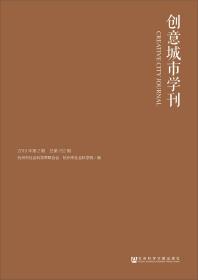
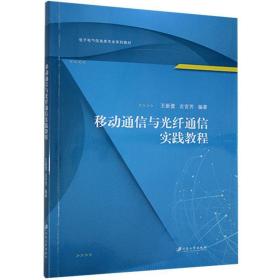

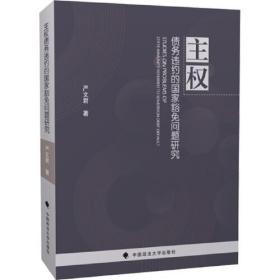

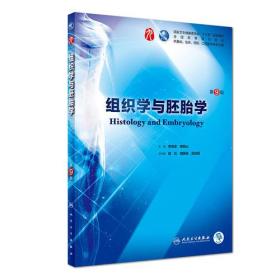


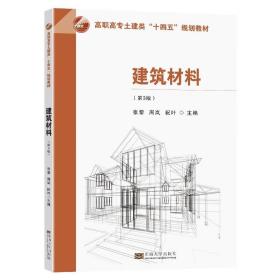

以下为对购买帮助不大的评价